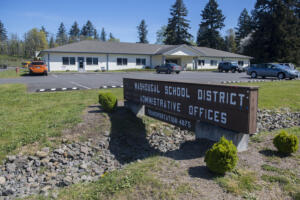East County Fire and Rescue is asking voters to approve a bond on Nov. 5 that would support the purchase of fire apparatus and equipment, and support repairs and improvements at three of its stations.
The $1.275 million, 20-year capital projects bond would fund two new fire engines, one brush truck, new fire fighting and medical equipment, an emergency generator at Mount Norway Station 94, parking lot repair at Sunnyside Station 93 and a water well at Livingston Mountain Station 92.
It is estimated that the bond would cost taxpayers 9 cents per $1,000 of assessed property valuation. This means that the owner of a $300,000 home would pay approximately $27 per year.
ECFR Commission Chairman Gary Larson said the amount of money needed each year to repair the three aging engines, which range from 14 to 20 years old, absorbs 30 percent of the district’s $29,000 maintenance budget.
“The bond is necessary because the equipment is wearing out, and the cost to maintain it is increasing each year,” he said. “And leasing isn’t an option because there is no room in our current budget for that kind of line item.




